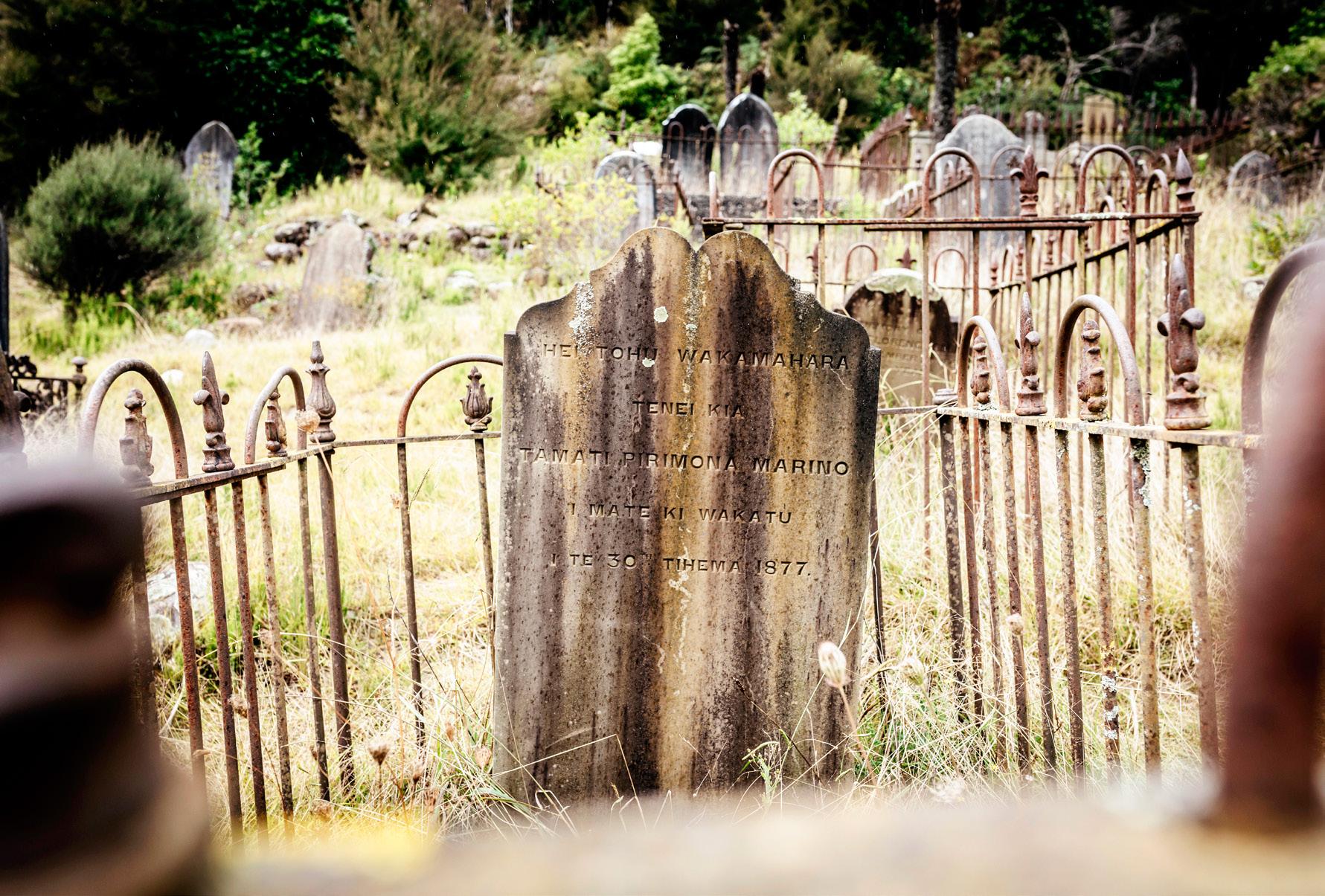
4 minute read
Our tūpuna legacy: Tāmati Pirimona Marino
OUR TŪPUNA LEGACY
Tāmati Pirimona Marino
Ngāti Tama, Ngāti Rārua, Te Āti Awa, Kaitangata
Gottfried Lindauer: Tāmati Pirimona Marino [oil on canvas] Auckland Art Gallery Toi o Tāmaki. gift of Mr H E Partridge, 1915 (1915/2/37) http://www.lindaueronline.co.nz/maori-portraits/ tamati-pirimona-marino. WORDS: X
Asmall urupā on the side of a hill near the settlement of Aorere (Collingwood) is the final resting place of rangatira Tāmati Pirimona Marino, chief for an extended whānau community at Aorere. Leader, humanitarian, trader, entrepreneur, mariner and politician, Tāmati Pirimona Marino lived in a time of great change in Aotearoa. He had considerable mana and influence and was held in high regard in both te ao Māori and in early colonial society.
Tāmati Pirimona Marino was important to us in terms of his leadership, and in many ways he is a role model for us.
Along with his father and two brothers, Tāmati Marino is named as one of the orginal owners of the Nelson Tenths’.


[Coates, Isaac], 1808-1878 :Erino, Massacre Bay. [1843?]. part of Coates, Isaac, 1808-1878. Coates, Isaac, 1808-1878 :Erino, Massacre Bay. [1843?].. Ref: A-114-052. Alexander Turnbull Library, Wellington, New Zealand. /records/23035550.
He led the Kaitangata people at Aorere. As a kinship group, Kaitangata trace their name from a pā site, Kaitangata, at what today is known as Ngāti Mutunga, in northern Taranaki.
A number of images of Tāmati Marino exist, depicting him at different stages of his life. His portait was posthumously painted by celebrated colonial artist Gottfried Lindauer and this portrait is now part of the Auckland Art Gallery Toi o Tāmaki Lindauer Collection. In this portrait he is wearing a valuable cloak of woven muka (flax fibre) and kurī (dog skin). It’s a striking portrait of our tūpuna.
In 2014, Rōpata Taylor, General Manager Manaaki, was part of a group from Aotearoa who accompanied a selection of Lindauer portraits, including the one of Tāmati Pirimona Marino, to a series of exhibition sites in Europe. One of the locations was Západočeská galerie (Gallery of West Bohemia) in Pilsen, Lindauer’s birthplace. From a cultural perspective, the exhibition series was akin to a kawe mate, the ritual where the whānau of someone who has died takes an image of that person to another place that has a significant connection to them. Taking the portraits of such an illustrious group of tūpuna to Lindauer’s home town was emotional and meaningful, Rōpata recalls. Tāmati Pirimona Marino led a busy life. He coowned a large schooner, the Erena, named after his first wife, Erena Te Kehu. The Erena was the first Māori-owned vessel officially registered in Nelson, and Marino used it to trade and ship goods and carry passengers around Te Tauihu and across to the North Island. As a trader and entrepreneur in the mid-1800s, he travelled up and down the Abel Tasman National Park coastline.
He was also a civil rights activist. In 1847, Tāmati Marino took the first legal case of a civil nature between a Māori and a European when he took his European business partner, Samuel Strong, to court for what was basically a breach of contract. Strong was paying Māori workers less

Grave of Tāmati Pirimona Marino at Aorere urupā.
money than the European workers doing the same work. The court found for Marino, awarding him £27. Such a demonstration of equity, equality, human rights and race relations is very important and shows qualities of leadership that still resonate today.
As a humanitarian, he provided support, food and refuge for people living in destitution during the gold fever in Mōhua in the late 1850s, actively petitioning the government to support basic human rights for those living in poverty. The gold rush also sparked an intense interest in land, and Tāmati Marino was active in trying to protect the land interests of Māori.
In 1847 his reputation for integrity and fair dealing saw him achieve another important milestone when he was appointed as one of the first Native Assessors to settle disputes between Māori and settlers. He continued this role into the 1860s, helping diffuse issues in Buller, on the West Coast. Because of his mana and influence, he is mentioned frequently in the diaries and records of colonial settlers, explorers and administrators, such as Thomas Brunner and Charles Heaphy. In these records, he is known by a number of different names, including Te Pua, Te Pua Ringahuri, Takina, Te Wetu, Tāmati Freeman, Thomas Freeman, Arino, Erino, Irino and Rino.
Hilary and John Mitchell’s volumes Te Tau Ihu o Te Waka also include many stories about Tāmati Marino and the impact and influence he had on the history of Te Tauihu. Today, Tāmati Marino is represented in carvings at both Whakatū and Onetāhua marae. The Wakatū subdivision of Waimeha has Marino Street, and the Marino mountain range, which includes Mt Owen, are other ways he is remembered.
Marino died in 1877, aged around 80 years. With no direct living descendants, his interests came to three first cousins of Ngāti Tama and Ngāti Rārua descent. Those whānau are part of Wakatū today. Their direct ancestors were his first cousins and were living in Te Tauihu at the time of his death, and were among the first wave of people on the Heke. Those vital whakapapa connections are woven through the generations of Wakatū today.










